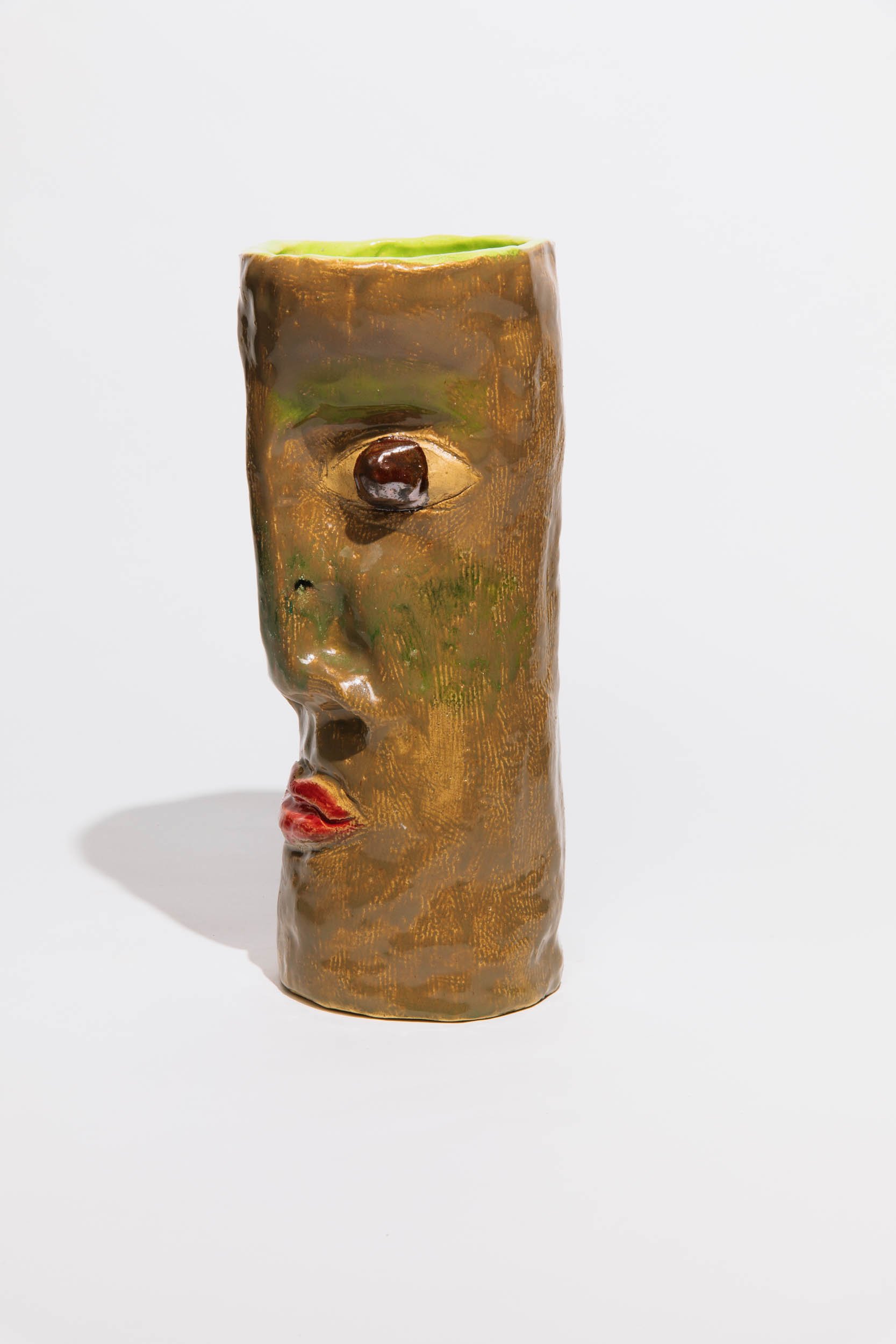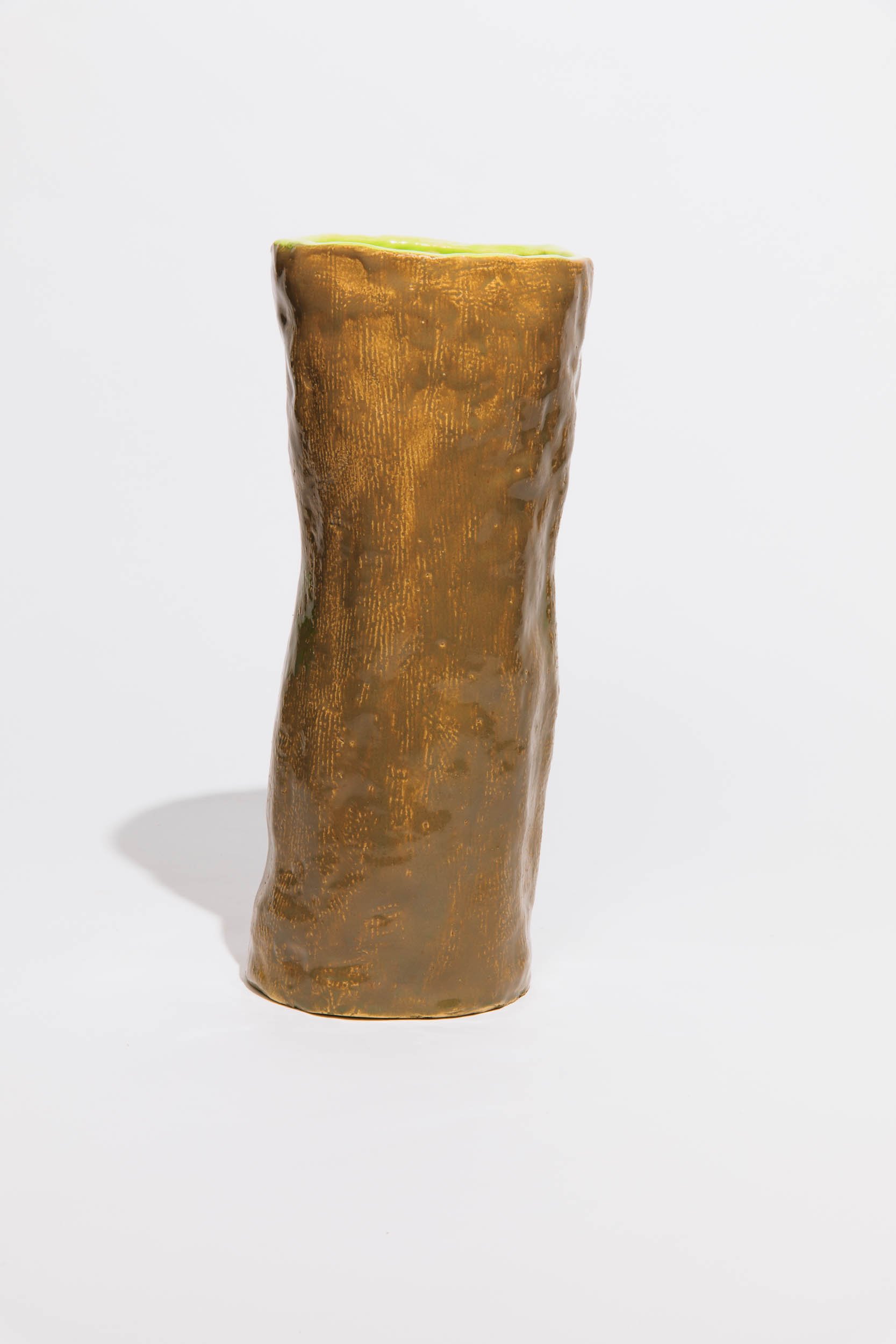Anna Riess - 'Slim Signore', Ceramic Object, 2024




Anna Riess - 'Slim Signore', Ceramic Object, 2024
This sculpture takes the form of a tall, slender brown head - an evocative meditation on identity, perception, and materiality. The surface, carefully crafted to resemble weathered wood, blurs the line between ceramic and natural material, inviting viewers to question what they see: is it a carved wooden figure, or a fired clay sculpture transformed through texture and glaze?
With its elongated form and earthy brown tones, the piece balances fragility and strength, presence and mystery. The subtle asymmetry in its features suggests shifting emotions and layered expressions, while the tactile surface plays with the notion of permanence and impermanence -what the sculpture looks like, and what it might be.
Through this interplay of form and material, Anna Riess explores the fluid boundaries between object and subject, between what is perceived and what is imagined. The work becomes a contemplative space where viewers negotiate the tension between appearance and essence, memory and identity.
Anna Riess is a multidisciplinary artist and cultural anthropologist based in Vienna. Her work explores themes of embodiment, emotion, and interbodily relations through materials like clay, metal, and textiles. Deeply influenced by her experience of motherhood, she transforms everyday objects into symbolic forms - one of her gestures she describes as the “nippelization of the everyday.”
Riess is the co-founder of the Claygroundretreat and the creator of Circle of Clay, a workshop series she has led at institutions such as the Museum of Applied Arts in Vienna or the Hotel Kai36 in Graz. Her workshops invite participants - regardless of prior experience - to develop their own sculptural language through hands-on engagement with clay.
Her sculptural objects possess a strong visual identity and tactile presence, marked by a recognizable aesthetic and a willingness to push the boundaries of material behavior. Especially drawn to the tactility of clay, Riess explores how movement and fluidity can be captured in form - leaving the trace of the hand visible in its hardened state. With a strong interest in local materials and interdisciplinary exchange, her practice bridges artistic, social, and ecological concerns in both conceptual and applied ways.